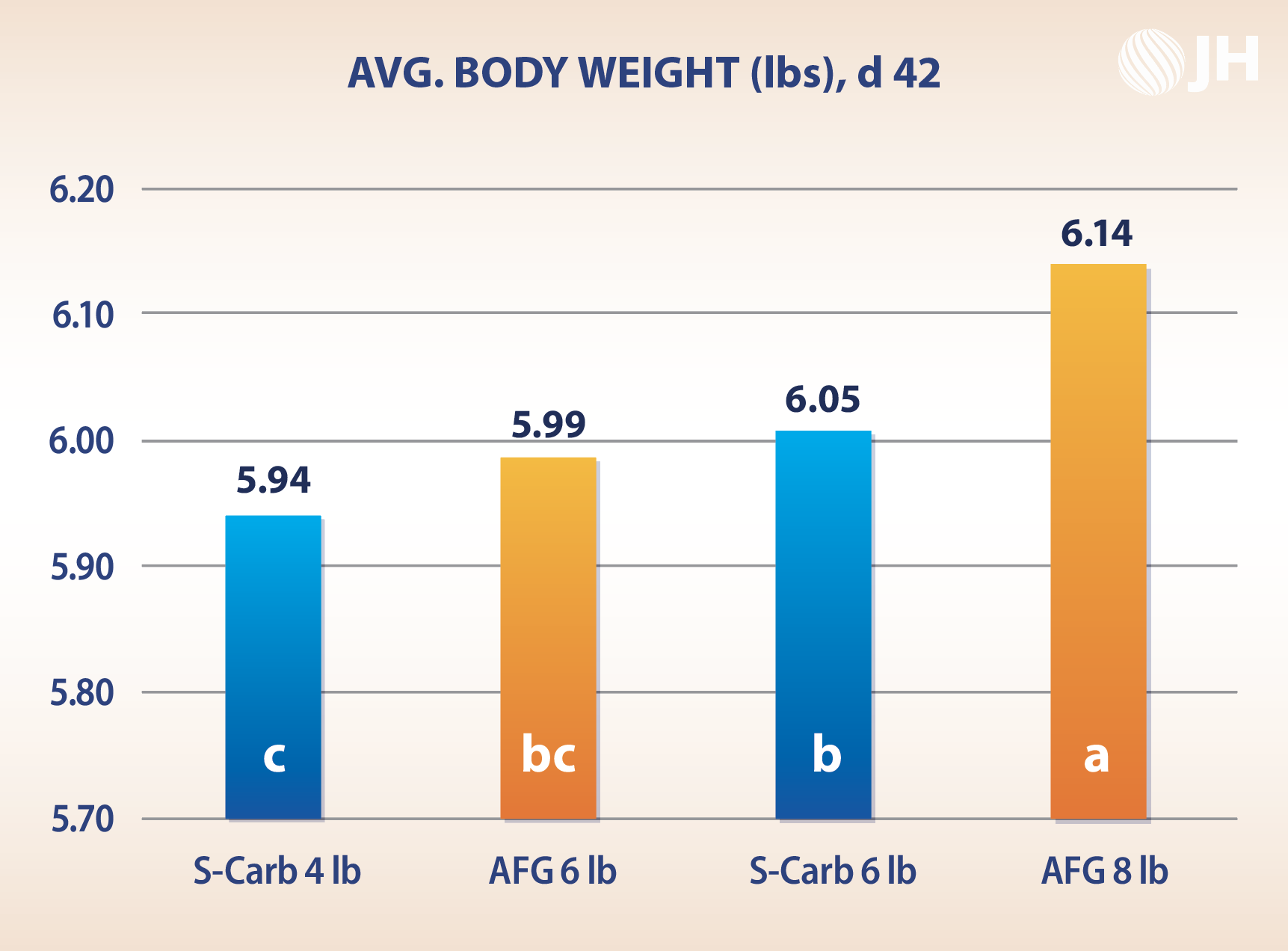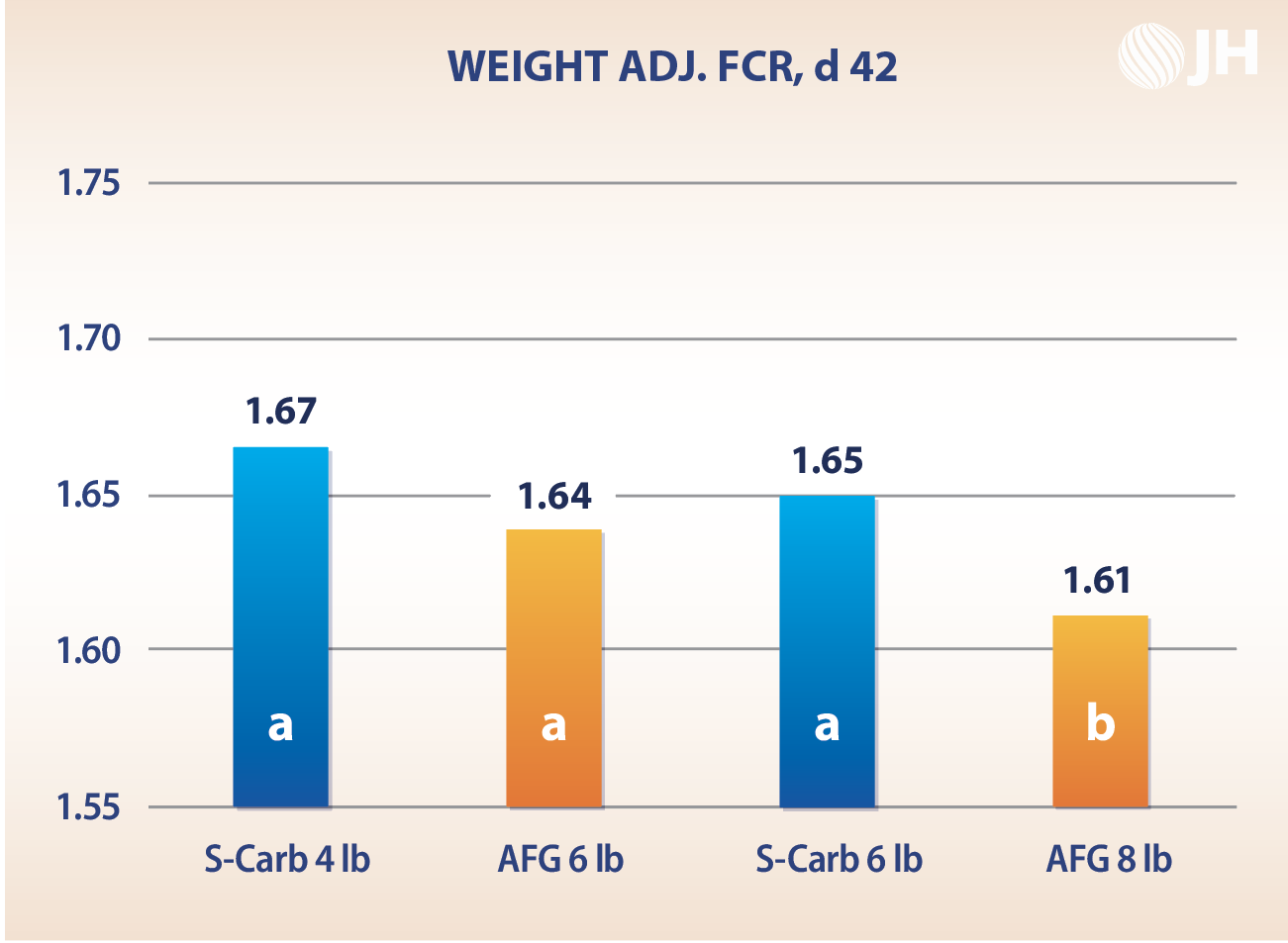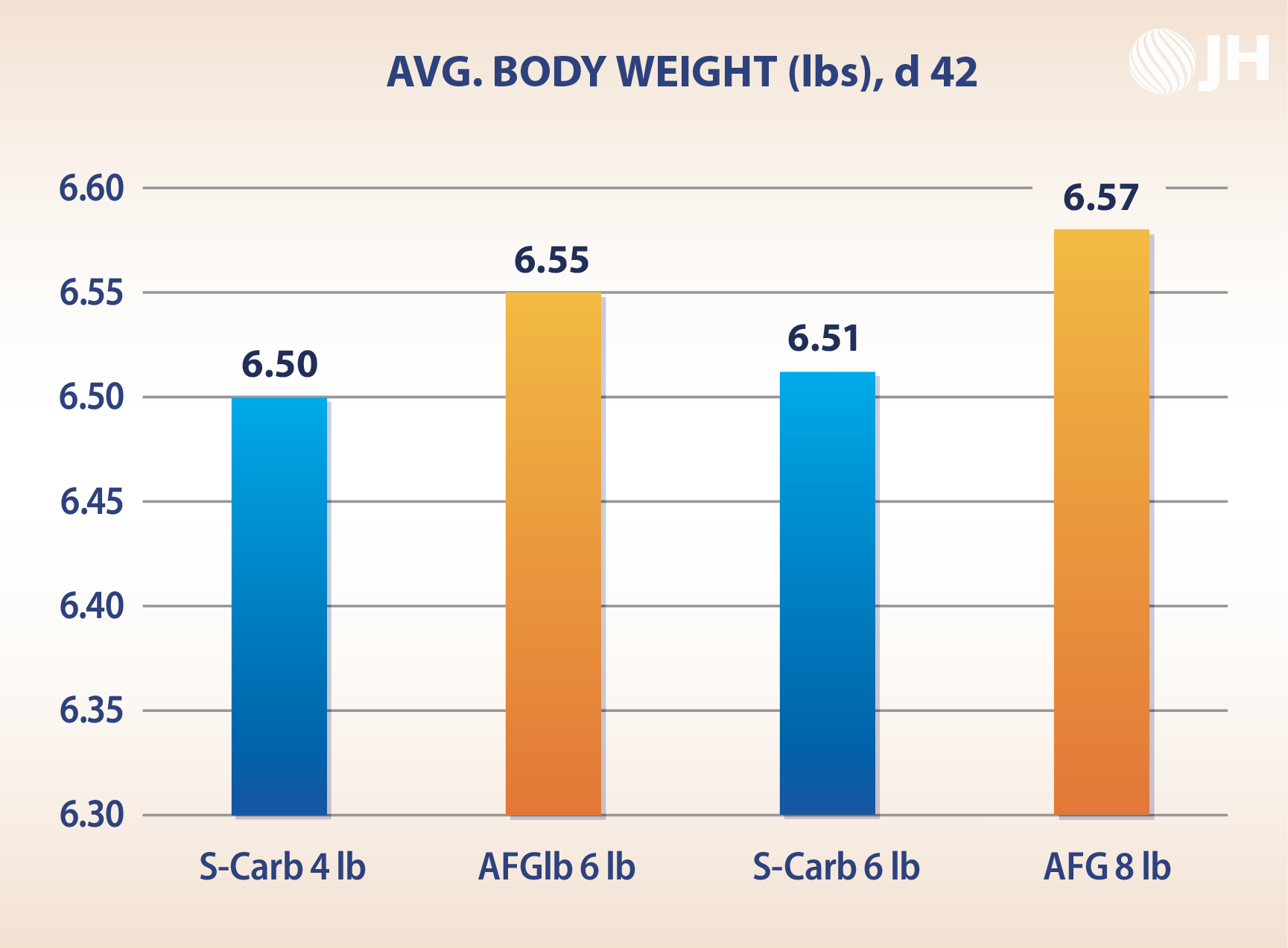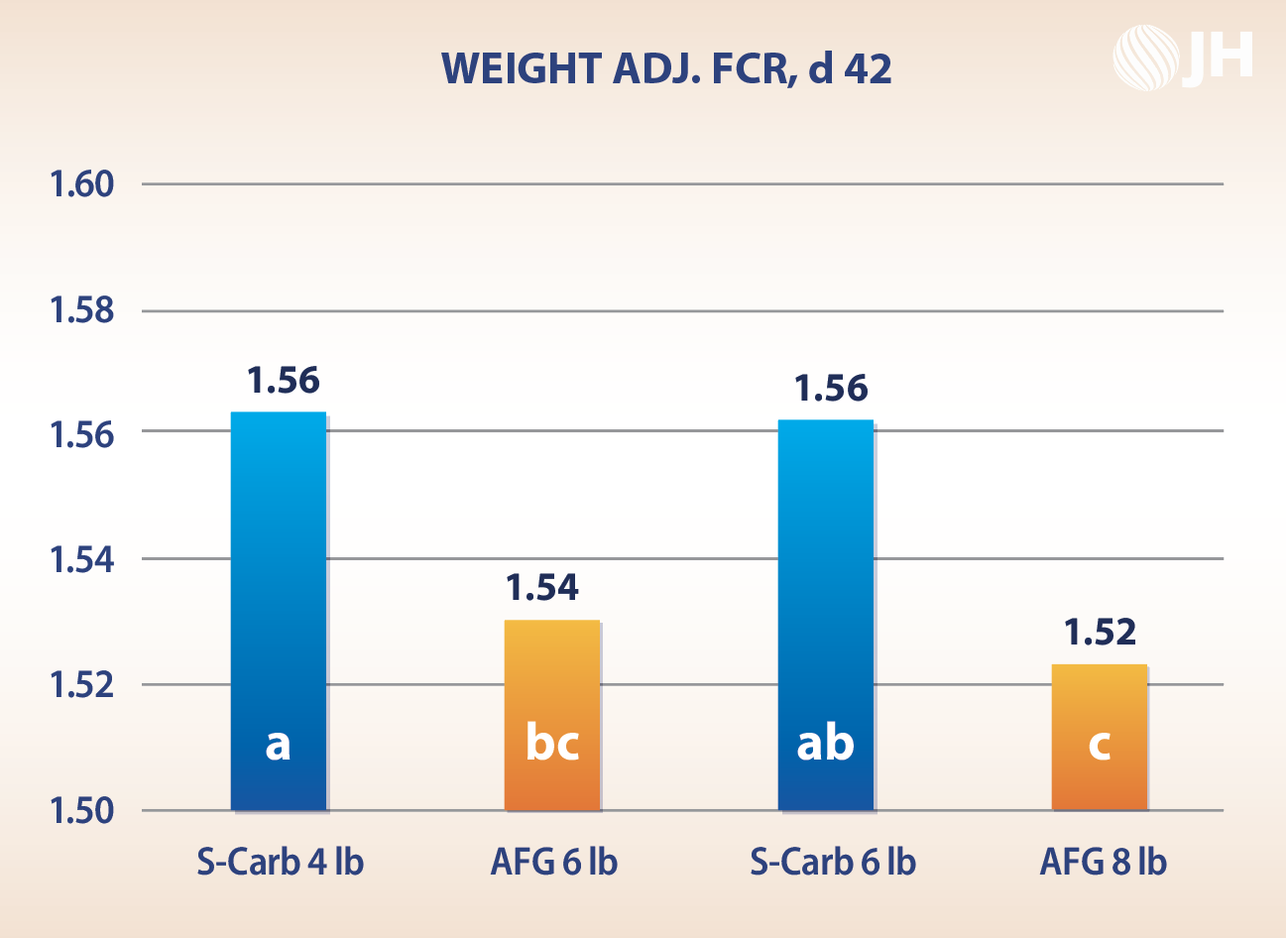Your Sodium Source Matters
Replacing Sodium Sesquicarbonate with Sodium Bisulfate (AFG) in Broilers
For years, there were few sodium options, which often made the addition of salt, sodium bicarbonate or sodium sesquicarbonate in broiler diets a standard. With the introduction of AFG—which provides the added value of sulfate and acidification–you can now meet the same sodium requirements and balance chloride requirements while gaining significant performance advantages.
Dr. Bradley Turner, DVM, MAM, conducted two trials to assess the impact of AFG and sodium sesquicarbonate on birds in coccidia-challenged and unchallenged conditions. Diets for group one included either 4 lb (0.2%) sodium sesquicarbonate (S-Carb) or 6 lb (0.3%) AFG, while diets for group two included 6 lb (0.3%) sodium sesquicarbonate or 8 lb (0.4%) AFG. Note that AFG and sodium sesquicarbonate require different inclusion rates because the two products differ in sodium content.
Dr. Bradley Turner, DVM, MAM, conducted two trials to assess the impact of AFG and S-Carb on birds in coccidia-challenged and unchallenged conditions. Diets for group one included either 0.2% S-Carb or 0.3% AFG, while diets for group two included 0.3% S-Carb or 0.4% AFG. Note that AFG and S-Carb require different inclusion rates because of the two products’ different sodium content.
The two trials were run in the US in April and June 2022 using a commercial-type broiler house. The first study was without the coccidia challenge and the second one was with the coccidia challenge using two times the dose of an advent live coccidia vaccine. For each trial, 1,920 Cobb 500 male chicks were distributed randomly in one of four treatments projecting a stocking density of ~38 kg/m2 or 13.5 birds/m2 at 42d. Chickens were fed diets based on corn and soybean meal, and formulated to meet the Cobb 500 nutrient specifications. All diets were formulated to have a similar sodium amount, 0.19%.
At day 28, birds fed 8 lb (0.4%) AFG weighed more than any other diet – with or without a coccidia challenge.
Cocci-Challenged Birds Performed Better on AFG
In this 42-day trial, all birds were raised on built-up litter and administered a 2X dose of coccidiosis vaccine. The result showed that birds fed AFG showed improvements in weight gain, mortality and feed conversion. At d 42, birds fed 8 lb (0.4%) AFG outperformed every other diet.
Birds fed 8 lb (0.4%) AFG weighed significantly more than birds fed sodium sesquicarbonate

Figure 1. Effect of treatments with coccidia challenge on body weight at 42 days.

Figure 2. Effect of treatments with coccidia challenge on feed conversion at 42 days.
1Means represent 12 replicates/treatment of 40 male birds/replicate. Chicks with coccidia-challenge conditions received 2x dose of a live coccidia vaccine.
a-c Means within each bar with different superscripts differ significantly (P < 0.05).
Feed conversion improved by 4 points for birds fed 8 lb (0.4%) AFG as compared to 6 lb (0.3%) sodium sesquicarbonate
Learn more about AFG
Unchallenged Birds Perform Better with AFG
The similar 42-day trial conducted with no coccidia challenge showed that birds fed AFG diets outperformed those fed sodium sesquicarbonate diets with improvements in body weight and feed conversion.

Figure 3. Effect of treatments without coccidia challenge on body weight at 42 days.
At d 42, birds fed 8 lb (0.4%) AFG outperformed every other diet with higher weight than birds fed S-Carb.
Feed conversion improved by 3 points for birds fed 8 lb (0.4%) AFG as compared to 6 lb (0.3%) sodium sesquicarbonate.

Figure 4. Effect of treatments without coccidia challenge on feed conversion at 42 days.
